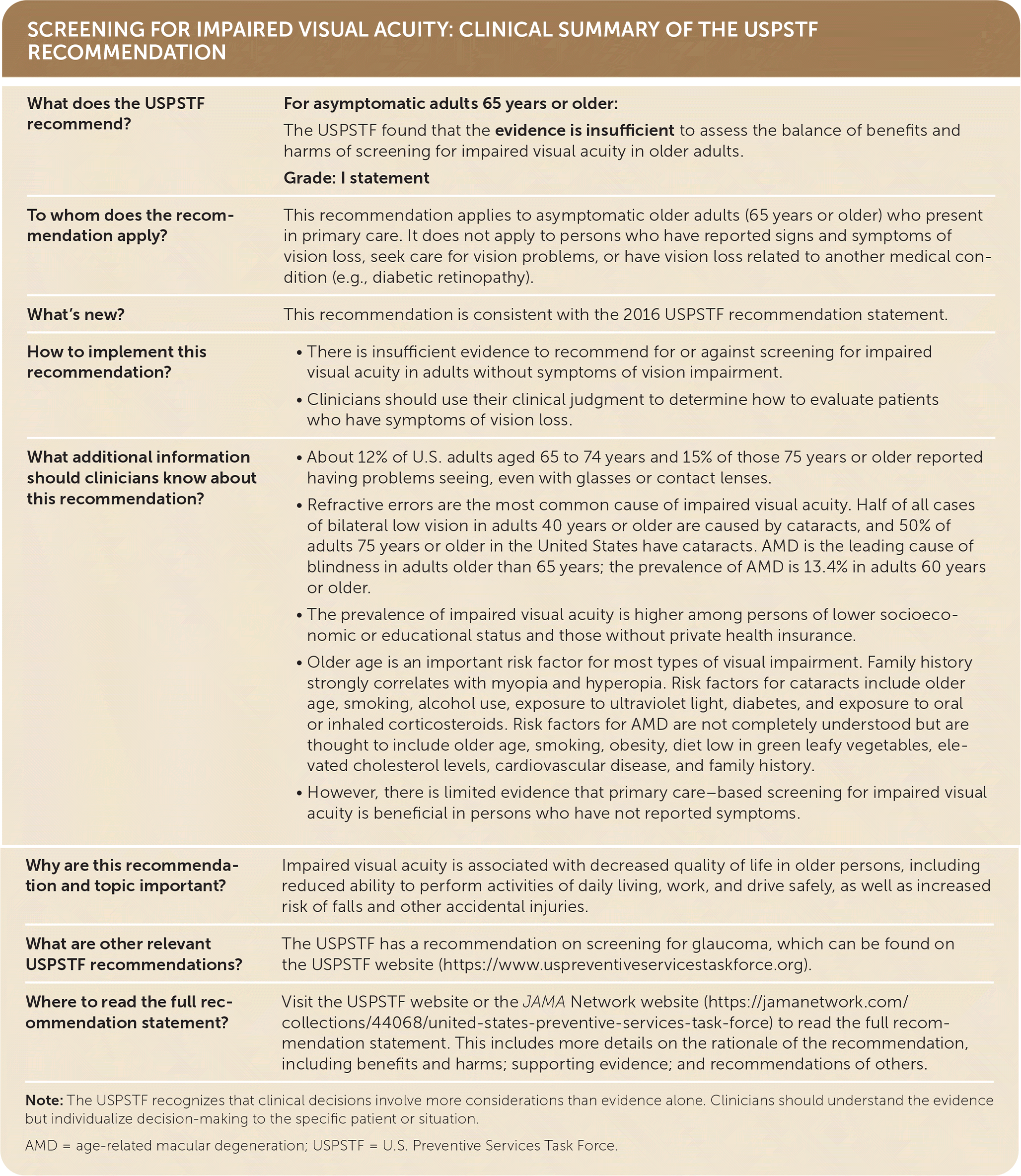
Am Fam Physician. 2022;106(2):online
As published by the USPSTF.

| What does the USPSTF recommend? | For asymptomatic adults 65 years or older: The USPSTF found that the evidence is insufficient to assess the balance of benefits and harms of screening for impaired visual acuity in older adults. Grade: I statement |
| To whom does the recommendation apply? | This recommendation applies to asymptomatic older adults (65 years or older) who present in primary care. It does not apply to persons who have reported signs and symptoms of vision loss, seek care for vision problems, or have vision loss related to another medical condition (e.g., diabetic retinopathy). |
| What's new? | This recommendation is consistent with the 2016 USPSTF recommendation statement. |
| How to implement this recommendation? |
|
| What additional information should clinicians know about this recommendation? |
|
| Why are this recommendation and topic important? | Impaired visual acuity is associated with decreased quality of life in older persons, including reduced ability to perform activities of daily living, work, and drive safely, as well as increased risk of falls and other accidental injuries. |
| What are other relevant USPSTF recommendations? | The USPSTF has a recommendation on screening for glaucoma, which can be found on the USPSTF website (https://www.uspreventiveservicestaskforce.org). |
| Where to read the full recommendation statement? | Visit the USPSTF website or the JAMA Network website (https://jamanetwork.com/collections/44068/united-states-preventive-services-task-force) to read the full recommendation statement. This includes more details on the rationale of the recommendation, including benefits and harms; supporting evidence; and recommendations of others. |
The full recommendation statement is available at https://www.uspreventiveservicestaskforce.org/uspstf/recommendation/impaired-visual-acuity-screening-older-adults.
The USPSTF recommendations are independent of the U.S. government. They do not represent the views of the Agency for Healthcare Research and Quality, the U.S. Department of Health and Human Services, or the U.S. Public Health Service.
